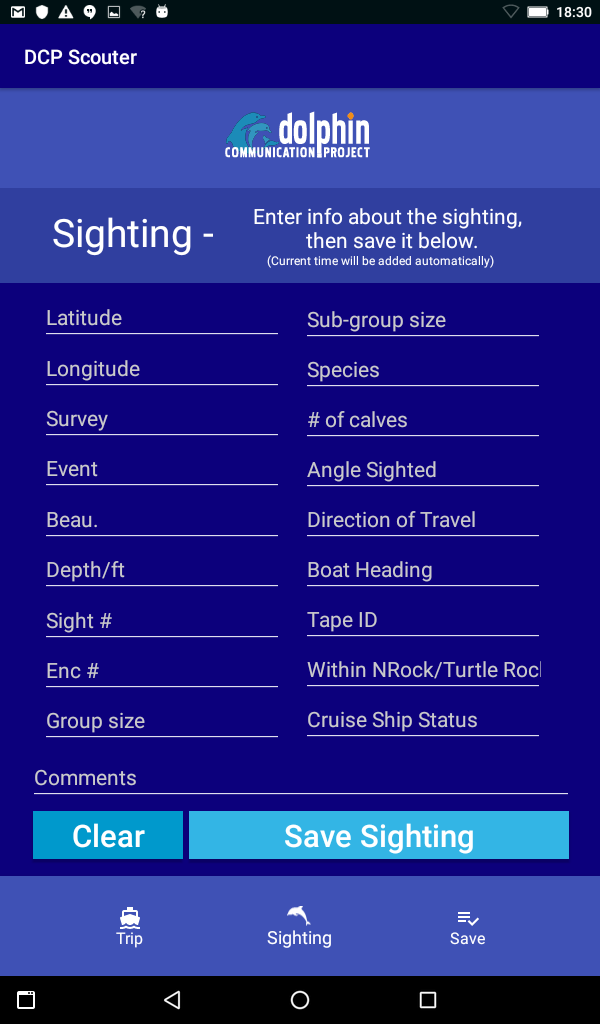
The Dolphin Communication Project
A film commemorating the Dolphin Communication Project's 20th Anniversary. Visit the DCP site to support their work.
The Dolphin Communication Project is an organization dedicated to the research of wild dolphin populations. I designed and developed a software solution as part of my work with DCP, seeking to improve data collection efficiency for their remote branch in the Bimini area of the Bahamas.
When observing dolphin pods on the seas, DCP logged data by pen and paper. This setup risked data loss due to tropical conditions, and necessitated many lost hours due to manual database updates.
I sought to improve this aspect of research while catering to the branch's needs. Research funding would not allow for implementation of costly hardware, and the remote location barred any solution requiring internet-access. As such, I developed a two-fold solution. First, a custom application for logging data on a water-resistant Android tablet; a substitute for the risky pen and paper approach. Second, a macro for their existing Excel database allowing them to automatically import data from the mobile device; a circumvention of the costly time investment that is manual data inserts. This would allow for a setup less costly, less internet-dependent and more specialized to DCP's needs than other animal-observation software solutions on the market.
Logging Vessel Trip Data
DCP's first step in beginning a sighting expedition is to enter the constants for the trip itself. For example, the excursion date, the trip number (the 39th trip, the 40th trip, etc.), the vessel name, etc. These values remain unchanged throughout the entire expedition.


To mesh with DCP's process, the first screen of the app is 'Trip'. Used upon vessel departure, this screen allows the user to easily enter constants via on-touch text-entry fields. Concise instruction explains the relation between 'Trip' and the next screen; 'Sighting'.
Entering Sighting Data
The next step is to entering data upon encountering a dolphin pod. There are many different data fields to consider here, and a fixed entry-sequence would be too slow; the researchers often only gets glimpses of the animals! All fields must be presented up-front.



DCP's data comments are kept very brief, and the time of encounter can be pulled from the device's internal clock. This saves space for the remaining 18 fields, allowing the user to quickly enter only those necessary for the sighting. A small message explains the next steps upon saving the sighting data.
Saving & Exporting Data
Lastly, the app would need to allow the researcher to review and finalize the trip data before exporting it. Thus, this final 'Save' page needs to display rows in a format 1:1 with DCP's database, and allow the user to review and correct their work by scrolling through that list.



Upon pressing the 'Save' button, data is compiled into a .csv file, and saved within a directory of the device's internal storage. Once back on land, the researcher can invoke the macro I built for DCP's database via keyboard shortcut to automatically append all the new data rows. Quick and easy!